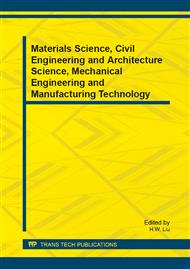[1]
Burtscher H. Physical characterization of particulate emissions from diesel engines: a review [J]. Journal of Aerosol Science, 2005, 36(7): 896-932.
DOI: 10.1016/j.jaerosci.2004.12.001
Google Scholar
[2]
Li Peng, Tan Piqiang, Lou Diming, et al. Exhaust After-treatment Technology for Heavy Duty Diesel Engine Meeting National V Emission [J]. Vehicle Engine, 2010 (004): 1-5.
Google Scholar
[3]
Tan Piqiang, Hu Zhiyuan, Lou Diming, et al. Effects of Diesel Particulate Filter Structural Parameters on Filtration Performance of Different Size Particle [J]. Chinese Journal of Mechanical Engineering, 2008, 44(2): 175-181.
DOI: 10.3901/jme.2008.02.175
Google Scholar
[4]
Alkemade U G, Schumann B. Engines and exhaust after treatment systems for future automotive applications [J]. Solid State Ionics, 2006, 177(26): 2291-2296.
DOI: 10.1016/j.ssi.2006.05.051
Google Scholar
[5]
Yezerets A, Currier N W, Kim D H, et al. Differential kinetic analysis of diesel particulate matter (soot) oxidation by oxygen using a step–response technique [J]. Applied Catalysis B: Environmental, 2005, 61(1): 120-129.
DOI: 10.1016/j.apcatb.2005.04.014
Google Scholar
[6]
Suresh A, Yezerets A, Currier N, et al. Diesel Particulate Filter System–Effect of Critical Variables on the Regeneration Strategy Development and Optimization[J]. SAE International Journal of Fuels and Lubricants, 2009, 1(1): 173-183.
DOI: 10.4271/2008-01-0329
Google Scholar
[7]
Van Poppel M, Lenaers G. Real life evaluation of the emission reduction potential of a city bus retrofitted with a continuous regenerating trap [J]. Atmospheric Environment, 2005, 39(13): 2451-2457.
DOI: 10.1016/j.atmosenv.2004.06.051
Google Scholar
[8]
Allansson R, Blakeman P G, Cooper B J, et al. Optimising the Low Temperature Performance and Regeneration Efficiency of the Continuously Regenerating Diesel Particulate Filter (CR-DPF) System [J]. SAE Technical Paper, 2002-01-0428.
DOI: 10.4271/2002-01-0428
Google Scholar
[9]
Liu Z, Shah A N, Ge Y, et al. Effects of continuously regenerating diesel particulate filters on regulated emissions and number-size distribution of particles emitted from a diesel engine [J]. Journal of Environmental Sciences, 2011, 23(5): 798-807.
DOI: 10.1016/s1001-0742(10)60452-4
Google Scholar
[10]
2005 G B. Limits and measurement methods for exhaust pollutants from compression ignition and gas fuelled positive ignition engines of vehicles (III, IV, V) [S][D]. (2005).
Google Scholar
[11]
Katare S, Patterson J E, Laing P M. Aged DOC Is a Net Consumer of NO2: Analyses of Vehicle, Engine-Dynamometer and Reactor Data [J]. SAE paper, 2007: 01-3984.
DOI: 10.4271/2007-01-3984
Google Scholar
[12]
Warner J R, Johnson J H, Bagley S T, et al. Effects of a catalyzed particulate filter on emissions from a diesel engine: Chemical characterization data and particulate emissions measured with thermal optical and gravimetric methods [J]. SAE transactions, 2003, 112(4): 119-136.
DOI: 10.4271/2003-01-0049
Google Scholar
[13]
Liu Zhihua, Ge Yunshan; Tan Jianwei, et al. Impacts of continuously regenerating trap and particle oxidation catalyst on the NO2 and particulate matter emissions emitted from diesel engine[J]. Journal of Environmental Sciences, 2012, 24(4): 624-631.
DOI: 10.1016/s1001-0742(11)60810-3
Google Scholar


